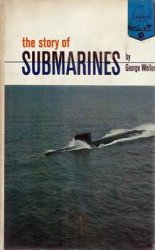Despite some successful attacks on plants, the Germans continued making jet fighters. Late in 1944 they even embarked on a wild project to produce a cheap, small “people’s fighter,” the Heinkel 162, to be flown by boys from the Hitler Youth. It was aerodynamically unsound and at best could only have been handled by a very experienced pilot, and the hundred or so built were never used operationally. Possibly the Luftwaffe command had the sense to see that this particular scheme was useless.
The fighter versions of the Me-262, operated by Jagdgeschwader 7 and Kamp-fgeschwader (]) 54 (the latter a fighter-bomber unit) were more dangerous. After rarely appearing for some weeks, they attacked bombers heading for Lutzken-dorf on February 9, shooting down one. JG 7 did not become fully operational until March, and it never reached full strength, but it had better trained pilots than Kommando Nowotny. Another, smaller jet fighter unit, jagdverbande 44, was formed in February. Galland, ousted as inspector of fighters for insufficient pandering to the fantasies of the Nazi leaders, had been allowed to form this squadron-sized unit, which had 25 Me-262s and 50 pilots, including many of Germany’s top aces. But JV 44 did not get into action until late March.
The Germans had devised new formations and tactics for the jets, and they developed a new type of 55 mm. air-to-air rockets, the R4M. It was far superior to the big, clumsy tube-launched rockets the Luftwaffe had used in 1943. An Me-262 could carry 24 R4Ms in underwing racks, and a single hit could destroy a bomber. Fortunately, they rarely had a chance to use it. Had three or four full-strength Me-262 geschwader existed a year earlier, equipped with R4Ms, the bombing of Germany would have been stopped dead.
On March 3 the jets and Me-163s engaged bombers and fighters en route to central German oil and rail targets. They destroyed three bombers and six P-5 Is. The Americans resumed “capping” the jet bases with fighter patrols to catch the Me-262s taking off and landing. There was a lull in jet operations for two weeks. Then, on March 18, a mission against tank plants and railroad stations in Berlin led to the biggest battle with the jets of the war. JG 7, using R4Ms for the first time, shot down most of the 13 American bombers and 6 fighters that were lost (15 bombers and 1 fighter were junked.) The escort fighters downed two Me-262s. Jets continued to pick off a few bombers on each mission. The Eighth estimated that it lost 30 bombers to the jets in March.
On April 7 the Germans uncorked an unpleasant surprise. Propeller-driven fighters reappeared, in an operation more typical of the Japanese than the Germans. The latter had long considered suicidal devices, including a piloted version of the V-1, and FW-190s carrying special heavy bombs, to crash-drive enemy ships. The pilots, in each case, were supposed to bail out in the final dive, although they were not likely to succeed. But for one reason or another these projects had fallen through. In March 1945 the Nazis formed a special “volunteer” unit, Sonderkommando Elbe, of 150 pilots. They were to ram American bombers, aiming at the fuselage in front of the tail, and if possible bail out. On April 7, covered by jets from JG 7 and some conventional fighters, 120-130 planes of Sonderkommando Elbe attacked, accompanied by propaganda exhortations over the radio. A nightmarish and furious air battle resulted. Up to 8 of the 17 bombers lost that day were rammed; astoundingly, 2 bombers were rammed but survived. The escort fighters claimed to have downed 64 planes, the bomber gunners 40. For once these were understatements—the Germans may have lost 133 planes. Sonderkommando Elbe did not reappear. The air force that had once ruled the sky from the English Channel to Russia had sunk to relying on kamikazes.
The Germans launched a last-ditch operation against Bomber Command. On March 3, having scraped up a last reserve of fuel, they sent 100 night fighters to England on the first major intruder mission since 1941. Taking the British by surprise, they downed 22 bombers returning from Germany, losing only 6 planes themselves. On subsequent nights, smaller forces bombed and strafed Eight Air Force bases, but they achieved nothing.
Jet operations continued for a few more weeks. In practice, despite their potential, the jets did not cause all that much trouble. As many as 1,433 Me-262s may have been built, although possibly not all were complete; but no more than 200 were ever operational. They had destroyed only about 150 Allied planes, while 100 of the German jets were lost in air combat.'®




 World History
World History









